Waterwise vegetable gardening isn’t just a trend; it’s a necessity, and I’m thrilled to share some simple DIY tricks to help you thrive! Are you tired of watching your precious veggies wilt under the summer sun, or feeling guilty about the amount of water you’re using? You’re not alone! For centuries, gardeners in arid regions have developed ingenious methods to conserve water while still enjoying bountiful harvests. Think of the ancient terraced gardens of the Incas, designed to maximize water retention, or the traditional dry farming techniques used across the Mediterranean. These practices highlight a deep understanding of working *with* nature, not against it.
In today’s world, with increasing water scarcity and a growing awareness of our environmental impact, mastering waterwise vegetable gardening is more crucial than ever. This isn’t just about saving water; it’s about building a resilient garden that can withstand unpredictable weather patterns and provide you with fresh, healthy produce. I’m going to show you some easy-to-implement DIY hacks that will transform your garden into a water-efficient oasis. From simple soil amendments to clever irrigation techniques, these tips will help you reduce your water consumption, save money, and enjoy a thriving vegetable garden, all while being kind to our planet. Let’s dive in and discover the secrets to a lush, water-smart garden!
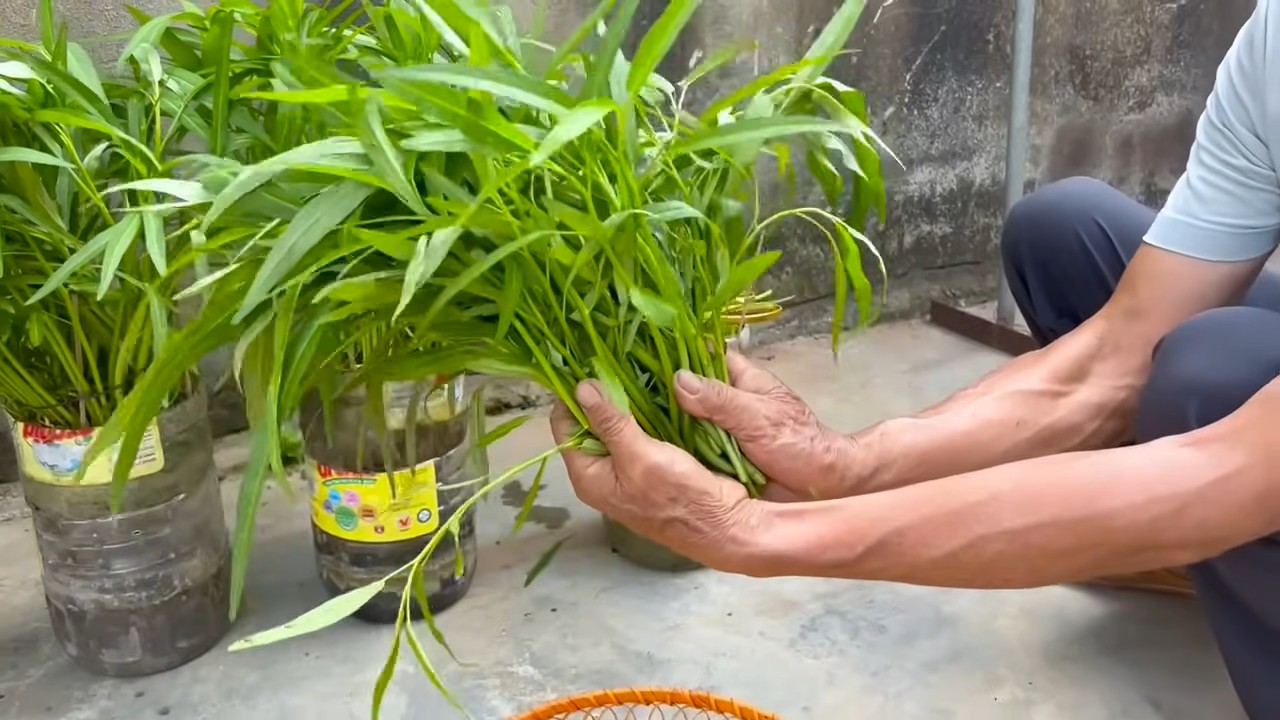
DIY Waterwise Vegetable Gardening: Thriving Gardens with Less Water
Hey there, fellow gardeners! I’m so excited to share my favorite tips and tricks for creating a lush, productive vegetable garden that doesn’t guzzle water. We all know how precious water is, and with a few smart strategies, you can grow delicious veggies while being kind to the environment (and your water bill!). Let’s dive in!
Choosing the Right Plants
The first step to a waterwise garden is selecting plants that naturally require less water. Think about where your veggies originate from – plants from arid regions are usually a safe bet.
* Drought-Tolerant Champions: Look for Mediterranean herbs like rosemary, thyme, and oregano. Vegetables like tomatoes (especially determinate varieties), peppers, eggplant, okra, squash (especially winter squash), beans, and corn are surprisingly drought-tolerant once established. Leafy greens like spinach and kale can also handle drier conditions with proper care.
* Native is Nifty: Consider incorporating native plants into your garden. They’re already adapted to your local climate and require minimal watering once they’re settled in. Research native edible plants in your area – you might be surprised by what you find!
* Avoid Water Hogs: Some vegetables are notorious water guzzlers. Celery, lettuce (especially iceberg), and cucumbers need consistent moisture to thrive. If you want to grow these, be prepared to give them extra attention and consider using targeted watering methods.
Preparing Your Soil for Water Retention
Healthy soil is the foundation of any successful garden, but it’s especially crucial for waterwise gardening. Soil that retains moisture effectively means you’ll need to water less frequently.
* Amend, Amend, Amend! This is probably the most important tip I can give you. Adding organic matter to your soil is like giving it a sponge-like quality. Compost, well-rotted manure, leaf mold, and other organic materials improve soil structure, allowing it to hold more water and nutrients.
* No-Till Gardening: Tilling can disrupt the soil structure and bring weed seeds to the surface. Try no-till gardening or reduced tillage to preserve the soil’s natural layers and beneficial microorganisms.
* Soil Testing: Get your soil tested to determine its pH and nutrient levels. This will help you choose the right amendments and fertilizers to improve its overall health and water-holding capacity.
Efficient Watering Techniques
How you water your garden is just as important as what you water. Ditch the overhead sprinklers and embrace targeted watering methods that deliver water directly to the roots where it’s needed most.
* Drip Irrigation: This is my absolute favorite! Drip irrigation systems deliver water slowly and directly to the plant roots, minimizing water loss through evaporation and runoff. You can easily customize a drip system to suit your garden layout and plant needs.
* Soaker Hoses: Similar to drip irrigation, soaker hoses release water slowly along their entire length. They’re great for rows of vegetables or closely spaced plants.
* Hand Watering: If you prefer hand watering, use a watering can or hose with a gentle shower nozzle. Water deeply and infrequently, focusing on the base of the plants. Avoid watering the foliage, as this can encourage fungal diseases.
* Watering Time: Water early in the morning or late in the evening to minimize evaporation. Avoid watering during the hottest part of the day.
Mulching Magic
Mulch is your best friend in a waterwise garden. It acts like a blanket, insulating the soil, suppressing weeds, and reducing water evaporation.
* Organic Mulches: Straw, wood chips, shredded bark, and compost are excellent organic mulches. They decompose over time, adding nutrients to the soil and further improving its water-holding capacity.
* Inorganic Mulches: Gravel, pebbles, and landscape fabric can also be used as mulches. They don’t decompose, so they’re a good option for long-term weed control and water conservation.
* Application: Apply a 2-4 inch layer of mulch around your plants, keeping it a few inches away from the stems to prevent rot.
Harvesting Rainwater
Rainwater is a free and sustainable source of water for your garden. Collecting rainwater is easier than you might think!
* Rain Barrels: Install rain barrels under your downspouts to collect rainwater from your roof. Make sure to choose food-grade barrels and screen the openings to prevent mosquitoes from breeding.
* DIY Rainwater Harvesting System: You can create your own rainwater harvesting system using a large container, a downspout diverter, and a hose.
* Watering with Rainwater: Use the collected rainwater to water your plants, especially during dry spells.
Weed Control
Weeds compete with your vegetables for water and nutrients. Keeping your garden weed-free is essential for waterwise gardening.
* Hand Weeding: The most effective way to control weeds is to pull them by hand. Do this regularly, especially when the weeds are small.
* Mulching: As mentioned earlier, mulch helps suppress weed growth.
* Cover Crops: Plant cover crops in the fall or winter to suppress weeds and improve soil health.
Grouping Plants Strategically
Group plants with similar water needs together. This allows you to water them more efficiently and avoid overwatering or underwatering.
* Hydrozoning: Create different zones in your garden based on water requirements. Group drought-tolerant plants together in one zone and plants that need more water in another zone.
* Companion Planting: Some plants can help each other thrive. For example, planting basil near tomatoes can help repel pests and improve tomato growth.
Step-by-Step Guide: Building a Self-Watering Container
Self-watering containers are a fantastic way to conserve water and provide your plants with a consistent supply of moisture. Here’s how to build one:
Materials You’ll Need:
* Two plastic storage bins (one slightly smaller than the other)
* Drill with various sized drill bits
* PVC pipe (about 12 inches long)
* Landscape fabric
* Potting mix
* Your chosen vegetable seedlings
Step-by-Step Instructions:
1. Prepare the Inner Container: Take the smaller storage bin and drill several drainage holes in the bottom. These holes will allow water to wick up into the soil.
2. Create the Reservoir: The larger bin will serve as the water reservoir. Drill a hole near the bottom of the larger bin, about 2 inches from the base. This is where you’ll insert the PVC pipe.
3. Insert the PVC Pipe: Insert the PVC pipe into the hole you drilled in the larger bin. This pipe will act as a fill tube, allowing you to add water to the reservoir. You can use silicone sealant around the pipe to ensure a watertight seal, but it’s not always necessary.
4. Line the Inner Container: Line the bottom of the smaller bin with landscape fabric. This will prevent the potting mix from falling into the reservoir.
5. Assemble the Container: Place the smaller bin inside the larger bin. The bottom of the smaller bin should be elevated above the bottom of the larger bin, creating a water reservoir.
6. Fill with Potting Mix: Fill the smaller bin with a high-quality potting mix.
7. Plant Your Seedlings: Plant your vegetable seedlings in the potting mix.
8. Water Thoroughly: Water the potting mix thoroughly from the top to help establish the plants.
9. Fill the Reservoir: Fill the reservoir with water through the PVC pipe.
10. Monitor and Refill: Monitor the water level in the reservoir and refill as needed. The frequency of refilling will depend on the weather and the water needs of your plants.
Step-by-Step Guide: Installing a Drip Irrigation System
Drip irrigation is a game-changer for waterwise gardening. Here’s how to set up a simple drip system:
Materials You’ll Need:
* Drip tubing
* Emitters (choose the appropriate flow rate for your plants)
* Connectors (tees, elbows, couplings)
* Pressure regulator
* Filter
* Timer (optional)
* Hole punch tool
Step-by-Step Instructions:
1. Plan Your Layout: Sketch out your garden layout and determine where you’ll need to run the drip tubing. Consider the water needs of each plant and choose the appropriate emitter flow rate.
2. Connect to Water Source: Connect the pressure regulator and filter to your water source (faucet or hose bib). The pressure regulator will reduce the water pressure to a level that’s safe for the drip tubing, and the filter will prevent debris from clogging the emitters.
3. Lay Out the Tubing: Lay out the drip tubing along your garden rows or around your plants.
4. Install Emitters: Use the hole punch tool to create holes in the tubing where you want to place the emitters. Insert the emitters into the
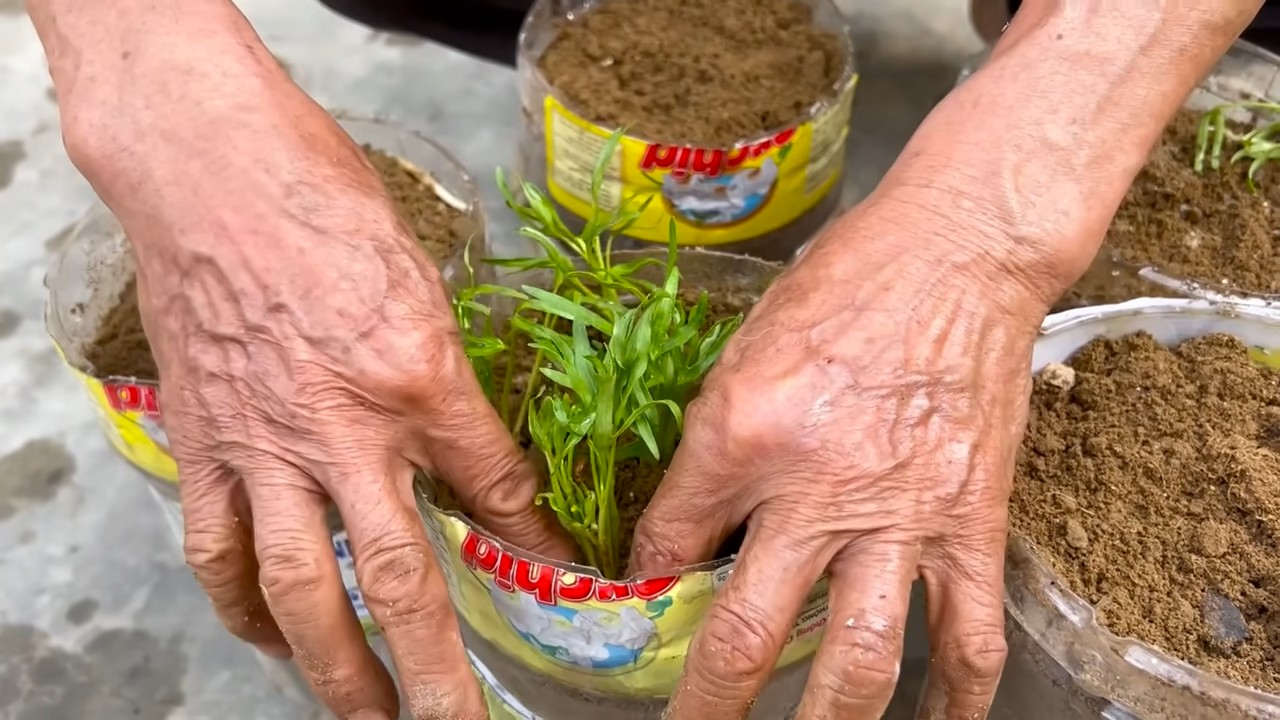
Conclusion
So, there you have it! Embracing waterwise vegetable gardening isn’t just a trend; it’s a necessity for a sustainable future and a fantastic way to ensure a bountiful harvest, even in drier climates. We’ve explored practical techniques, from selecting drought-tolerant varieties to implementing efficient irrigation methods like drip irrigation and soaker hoses. Remember, every drop counts, and by adopting these strategies, you’re not only conserving water but also creating a healthier, more resilient garden ecosystem.
The beauty of waterwise vegetable gardening lies in its adaptability. Feel free to experiment with different mulching materials, such as straw, wood chips, or even shredded leaves, to find what works best for your soil and climate. Consider incorporating companion planting to naturally suppress weeds and attract beneficial insects, further reducing the need for excessive watering and chemical interventions. For instance, planting basil near tomatoes can improve their flavor and deter pests, while marigolds can repel nematodes.
Don’t be afraid to get creative with your water harvesting techniques. Rain barrels are a great starting point, but you can also explore more advanced systems like swales and rain gardens to capture and redirect rainwater to your thirsty plants. Remember to check your local regulations regarding rainwater harvesting before implementing any large-scale projects.
Ultimately, waterwise vegetable gardening is a journey of continuous learning and adaptation. Observe your plants closely, pay attention to the weather patterns, and adjust your watering schedule accordingly. The more you understand your garden’s unique needs, the more successful you’ll be in creating a thriving, water-efficient oasis.
We strongly encourage you to give these waterwise techniques a try in your own garden. Start small, perhaps by focusing on a single raised bed or container, and gradually expand your efforts as you gain confidence and experience. The rewards are well worth the effort – a flourishing garden, reduced water bills, and the satisfaction of knowing that you’re doing your part to protect our precious water resources.
We’d love to hear about your experiences with waterwise vegetable gardening! Share your tips, successes, and challenges in the comments below. Let’s learn from each other and create a community of passionate, water-conscious gardeners. Together, we can make a difference, one drop at a time. Let us know which drought-tolerant varieties you’ve found most successful, or any unique water-saving strategies you’ve implemented. Your insights could inspire others to embrace waterwise gardening and contribute to a more sustainable future.
Frequently Asked Questions (FAQ)
What exactly does “waterwise” mean in the context of vegetable gardening?
Waterwise gardening refers to a set of practices and techniques designed to minimize water consumption while still maintaining a healthy and productive garden. It involves selecting drought-tolerant plant varieties, using efficient irrigation methods, improving soil health to enhance water retention, and implementing other strategies to conserve water resources. It’s about working *with* nature, rather than against it, to create a sustainable and thriving garden ecosystem.
Which vegetables are considered the most drought-tolerant?
Many vegetables can thrive with less water than others. Some excellent choices for waterwise vegetable gardening include:
* **Tomatoes:** Especially varieties like Roma, San Marzano, and cherry tomatoes.
* **Peppers:** Jalapenos, bell peppers, and other pepper varieties are generally quite drought-tolerant once established.
* **Eggplant:** A surprisingly resilient vegetable that can handle dry conditions.
* **Squash:** Zucchini, butternut squash, and other squash varieties are known for their drought tolerance.
* **Beans:** Especially bush beans and lima beans.
* **Okra:** A heat-loving vegetable that thrives in dry conditions.
* **Sweet Potatoes:** These root vegetables are very drought tolerant.
* **Herbs:** Many herbs, such as rosemary, thyme, oregano, and lavender, are naturally drought-tolerant.
Remember to research specific varieties within each vegetable type, as some may be more drought-tolerant than others.
How often should I water my waterwise vegetable garden?
The frequency of watering depends on several factors, including the type of vegetables you’re growing, the soil type, the climate, and the stage of plant growth. As a general rule, it’s better to water deeply and less frequently than to water shallowly and more often. This encourages roots to grow deeper into the soil, making them more resilient to drought.
Check the soil moisture before watering. Stick your finger about an inch or two into the soil. If it feels dry, it’s time to water. If it feels moist, wait a day or two and check again. During hot, dry weather, you may need to water more frequently, while during cooler, wetter weather, you can water less often.
What are the best irrigation methods for waterwise vegetable gardening?
Efficient irrigation is crucial for waterwise gardening. Here are some of the best methods:
* **Drip Irrigation:** This method delivers water directly to the roots of plants, minimizing water loss through evaporation. It’s highly efficient and can be easily automated with a timer.
* **Soaker Hoses:** Similar to drip irrigation, soaker hoses slowly release water into the soil, providing a consistent and even watering.
* **Hand Watering:** While less efficient than drip irrigation or soaker hoses, hand watering can be effective if done properly. Water slowly and deeply, focusing on the root zone of the plants. Avoid overhead watering, which can lead to water loss through evaporation and increase the risk of fungal diseases.
* **Ollas:** These are unglazed clay pots buried in the soil near plants. They are filled with water, which slowly seeps out into the surrounding soil, providing a constant source of moisture to the roots.
How can I improve my soil’s water retention capacity?
Improving soil health is essential for waterwise gardening. Here are some ways to enhance your soil’s water retention:
* **Add Organic Matter:** Incorporate compost, well-rotted manure, or other organic materials into your soil. Organic matter acts like a sponge, holding water and releasing it slowly to the plants.
* **Mulch:** Apply a layer of mulch around your plants. Mulch helps to retain moisture in the soil, suppress weeds, and regulate soil temperature.
* **Avoid Tilling:** Tilling can disrupt the soil structure and reduce its water-holding capacity. Consider using no-till or minimal-till gardening techniques.
* **Use Cover Crops:** Plant cover crops during the off-season to improve soil health and water retention. Cover crops can also help to prevent erosion and suppress weeds.
Can I use greywater for waterwise vegetable gardening?
Greywater, which is wastewater from showers, sinks, and washing machines (excluding toilet water), can be used for irrigation in some cases. However, it’s important to take precautions to ensure that the water is safe for plants and humans.
* **Check Local Regulations:** Some areas have restrictions on the use of greywater.
* **Use Only Mild Soaps and Detergents:** Avoid using products that contain harsh chemicals, such as bleach or boron.
* **Don’t Use Greywater on Edible Parts of Plants:** Only use greywater to irrigate the roots of plants, not the leaves or fruits.
* **Avoid Irrigating Root Vegetables with Greywater:** Root vegetables can absorb contaminants from the soil.
* **Filter the Greywater:** Use a filter to remove any solid particles from the greywater.
What are some other tips for waterwise vegetable gardening?
Here are a few additional tips to help you conserve water in your vegetable garden:
* **Water in the Morning:** Watering early in the morning allows the plants to absorb the water before it evaporates in the heat of the day.
* **Group Plants with Similar Water Needs:** This allows you to water each group of plants according to their specific requirements.
* **Weed Regularly:** Weeds compete with your vegetables for water and nutrients.
* **Use Rainwater Harvesting:** Collect rainwater in barrels or other containers and use it to irrigate your garden.
* **Consider Xeriscaping:** Xeriscaping is a landscaping technique that uses drought-tolerant plants and other water-saving strategies to create a beautiful and sustainable landscape.
By implementing these waterwise vegetable gardening techniques, you can create a thriving garden while conserving water and protecting our environment. Remember to adapt these strategies to your specific climate, soil type, and plant needs. Happy gardening!

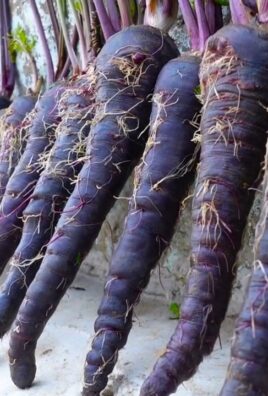
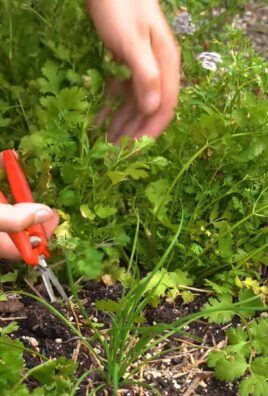
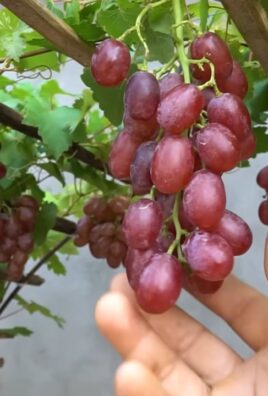
Leave a Comment